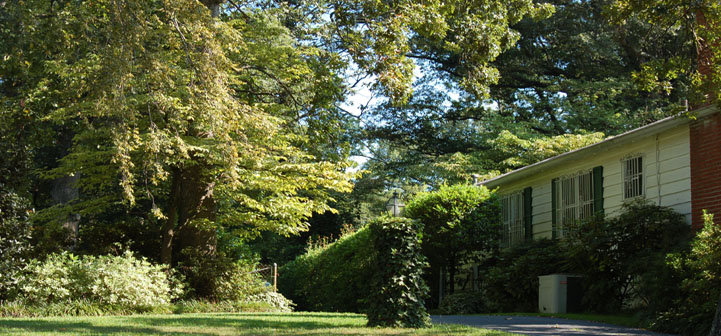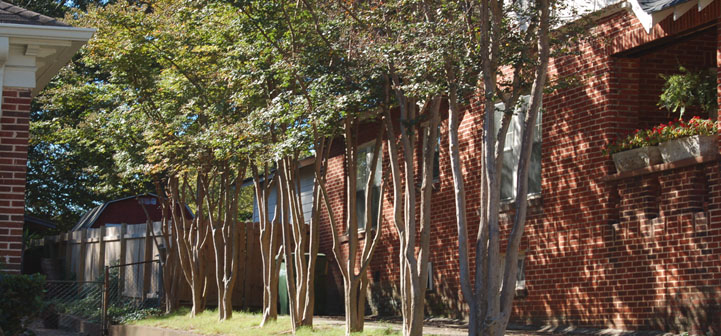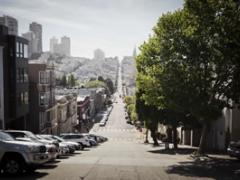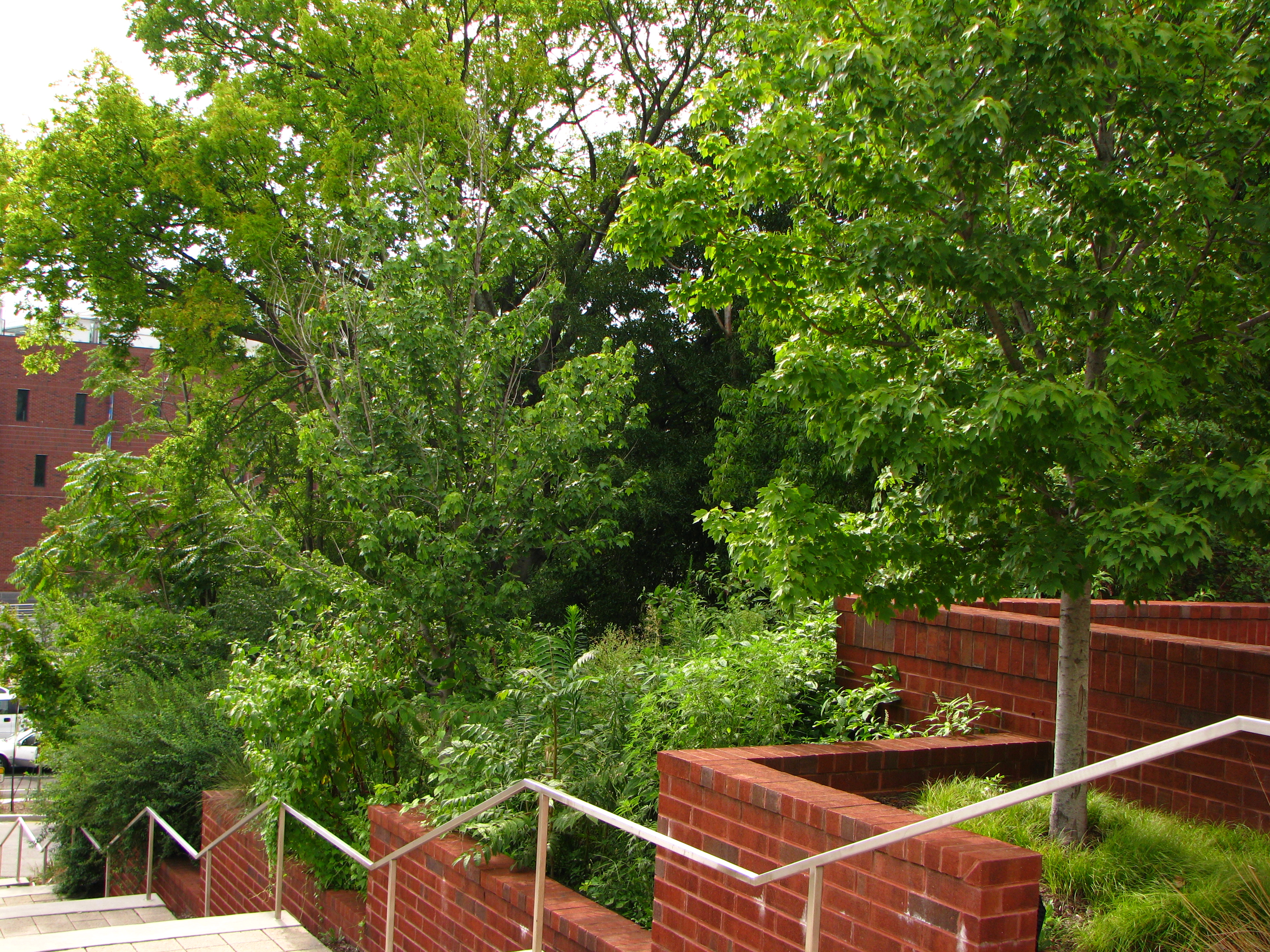
Trees are an important part of our communities, but tree planting, maintenance and protection require an investment of resources, including time and money. Are the benefits that trees afford our communities greater than their costs? The answer is yes. A study of future benefits and costs of a tree planting program in Chicago found that the projected value of trees, when measured by such things as increased property values and decreased energy use, is nearly three times greater than the projected costs (McPherson 1994a). The best way to achieve the greatest benefit from planting a tree is to select the right tree for the right location and take care of it.
There are many ways to help communities maximize the benefits and minimize the costs of the urban forest. Forestry professionals can work with communities in several ways providing educational and technical information, offering planning support, and working with specific groups and members of the community – to achieve the goals of urban forestry. This information can be communicated to people in the community through workshops, demonstrations, publications and other educational programs.
Trees benefit communities in a number of important ways including:
- Increase in property values
- Decrease in energy costs
- Reduction in storm water runoff
- Bioremediation
- Decrease in soil erosion
- Improvement in water quality
- Improvement in air quality
- Creation of wildlife habitat
- Increase in community pride
- Positive impact on consumer behavior
- Increase in recreational opportunities
- Improvement in health and well-being
- Reduction of noise levels
- Creation of buffer zones
Property Value Urban forests contribute to the economic vitality and stability of a community by increasing property values. Most people think that neighborhoods with trees are attractive places to live. The values of houses in these neighborhoods are usually higher than those of comparable houses in neighborhoods without trees (Morales 1980; Morales et al. 1983; Anderson and Cordell 1988; Des Rosiers et. al. 2002). Neighborhood green spaces or greenways typically increase the value of properties located nearby (Corrill and Cordell 1985; Des Rosiers et. al. 2002). Developers may profit when they receive a higher price for a property with trees. In many instances, careful preservation of existing trees during construction may actually cost less than clearing the land (Seila and Anderson 1982). The cost of preserving trees, such as the extra time needed for planning and using special techniques to protect the trees, should be looked at in relation to the immediate and long-term benefits of increased property values. Mature trees are especially valuable in areas where old housing or buildings have lost value. This is important to keeping downtown neighborhoods vital.
 Energy Cost Trees serve as “screens” by hiding unattractive areas and objects, such as junkyards and dumpsters. With proper design, tree plantings can also re-direct attention away from unsightly areas. Planting designs can be used to “direct” automobile or pedestrian traffic.
Energy Cost Trees serve as “screens” by hiding unattractive areas and objects, such as junkyards and dumpsters. With proper design, tree plantings can also re-direct attention away from unsightly areas. Planting designs can be used to “direct” automobile or pedestrian traffic.
- Energy Savings Trees can help reduce heating and cooling costs by shading buildings, acting as windbreaks, and cooling the air through evaporation that occurs through transpiration. When planting a tree to reduce energy costs, the species of tree, site location, type of building, and year-round climate should be considered. Reducing the need for electricity or gas energy also conserves fossil fuels and reduces carbon emissions.
- Shade Trees properly placed around buildings and air conditioning units can help reduce cooling costs (McPherson 1994b). Trees reflect and absorb solar radiation before it heats the dense building and pavement materials of a home or office. Usually, trees planted to the west and south of a building reduce air conditioning costs the most by blocking the afternoon summer sun when it is the hottest. In tropical climates, an evergreen tree offers protection from the sun throughout the year (Harris et al. 2003). In colder climates, trees located south of a building should be carefully placed to reduce shading of buildings in the winter. Winter shade can increase heating costs more than summer shade reduces cooling costs. The shade from trees can also reduce exposure to ultraviolet radiation, which increases the risk of some types of skin cancer.
- Windbreak Properly placed trees can reduce heating costs for a building by blocking the wind (McPherson 1994b). Although both conifers and deciduous trees reduce wind speed, conifers tend to have a greater impact during winter months. The density, or compactness, of the trees and the planting location determine the amount of wind reduction that occurs (Harris 1992). Trees should be planted based on the direction of the prevailing wind.
- Evaporative Cooling Urban areas typically are warmer than rural areas because of the urban “heat island” effect (above figure). Buildings, paved areas, and sparse tree canopy in an urban area contribute to the higher temperature. Trees help to reduce the air temperature around them through the evaporation of water from their leaves, acting as nature’s air conditioner (Gill et al. 2007). In fact, in a study conducted by Rosenzweig et al. (2006), light-colored surfaces, living roofs and curbside trees were all compared in their ability to mitigate the heat island effect. Curbside trees were found to be most effective.
Bioremediation Trees can remediate and serve as buffers to sites that have been contaminated with both inorganic and organic compounds, such as metals and nitrates. Remediation of inorganic compounds typically occurs in one of three ways: contaminants are absorbed up into the tree’s plant parts, adsorbed onto the tree’s roots, or immobilized in the soil. Remediation of organic compounds also typically occurs in one of three ways: contaminants are absorbed and broken down into safer compounds, mycorrhizae break down the contaminants in the root zone, or contaminants are absorbed and released as safer compounds into the atmosphere. See Bioremediation links and inquiry resources from Cornell University and Bioremediation –EnviroTools.org – Michigan State University.

Air Quality Air pollution is not only a major human health risk, but also reduces visibility and damages vegetation and man-made materials. Trees and vegetation improve air quality in three ways:
- Absorption and Reduction of Airborne Pollutants Trees, especially those with large leaf-surface areas (Nowak 1994), absorb and trap airborne dirt and chemical particles, such as nitrogen oxide, sulfur dioxide, carbon monoxide, and ozone. Trees also help by reducing wind speed, so that heavy particles settle out (Harris 1992). Communities benefit not only from cleaner air, but also from the reduced cost of implementing air pollution controls.
- Carbon Storage Carbon dioxide, a by-product of burning fossil fuels such as gas and coal, is one of the primary chemical compounds that influences global warming (Akbari et al 1992). Urban forests in the United States store millions of tons of the carbon from this compound annually, helping reduce the level of carbon dioxide in the atmosphere (Nowak and Crane 2002).
- Reduction of Carbon Emissions The “cooling effect” of trees, including shade and evaporative cooling, decreases the demand for electricity. This results in the reduction of carbon emissions from power plants supplying the energy. Trees, therefore, provide the double benefit of not only storing carbon, but also helping to reduce carbon emissions. Trees absorb carbon dioxide, which is produced during the photosynthesis process, and also shade buildings, which results in reduced amounts of carbon dioxide from the production of energy (Akbari and others 1992, p.35, fig. 210).
- Reduction of Anthropogenic VOC Emissions and Ground-level Ozone The shade provided by urban trees can reduce air temperatures by 1 to 3 degrees in parking lots and other paved areas. Lower temperatures reduce the evaporative volatile organic compounds (VOCs) emitted from asphalt surfaces and cars. Combined with less VOC emissions, lower temperatures lead to less ground level ozone produced.

Wildlife Habitat Urban forests provide for wildlife habitat, supplying food, water, and cover for a variety of vertebrates and invertebrates. These animals enhance the recreational and educational opportunities associated with an urban forest and increase the ecological function of the forest ecosystem. Wildlife habitats range from streamside buffers and storm-water detention ponds to backyards and parks. Corridors of trees and other vegetation connecting natural areas in the urban environment add to the wildlife habitat and increase wildlife diversity.
Cultural Identity and Sense of Place Trees are a significant part of a community, offering important benefits not easily measured. Imagine what a community would be like without any trees. Trees and other landscaping add beauty to an urban area. Retailers often landscape their premises to improve community image and attract customers. A visitor’s first impression of a community is greatly influenced by the trees and other landscaping.
- Sense of place Neighborhoods with attractive landscapes foster a sense of community and belonging. People often identify with their own community by its tree-lined streets and historic groves of trees. Trees may also be associated with specific places, such as palm trees at a beach or memories of past events or times, such as a favorite tree climbed as a youth. Many communities have historical trees that have become landmarks. They may also be a focus point in the community’s identity, such as the live oaks or magnolias that are part of the culture in many Southern cities.
- Community involvement Community pride increases when neighborhood residents participate in local tree-planting programs. Such activities enhance a sense of ownership and an ongoing interest in developing and maintaining trees. This participation increases the success rate of the planting program. However, without local involvement in the planning and planting of the trees, the efforts may be viewed negatively by the residents.
- Decrease in violence Less violence occurs in urban public housing where there are trees. Researchers Sullivan and Kuo (1996) suggest that trees afford a place for neighbors to meet and get to know each other. Their research showed that friendships developed into a network of support.
Consumer Behavior Research from the University of Washington indicates that in business districts “…healthy and well-maintained trees send positive messages about the appeal of a district, the quality of products there and what customer service a shopper can expect.”
Recreational Opportunities Many city residents appreciate the recreational benefits urban forests provide. With the growing emphasis on physical fitness, urban forests, parks, and open spaces have become increasingly popular as places to walk, run, bike, and hike. Urban parks are often sites for large community events, such as art and music festivals. Some festivals are centered around trees such as the Cherry Blossom Festival in Macon, Georgia and the Dogwood Festival in Paducah, Kentucky.

Health & Well-being Life in a bustling urban setting can be both physically and mentally stressful, but there are indications that trees and other plants help improve human health.
- Physical and mental health The soothing influence of trees can help reduce stress levels and increase enjoyment of everyday activities. Physical activity in green spaces such as parks increases ties, reduces obesity, and improves mental health. Trees also contribute to cleaner air and water, which provides for an overall healthier community.
- Recuperation rates and therapy One study of recuperation rates after surgery found that patients whose windows offered a view of a wooded landscape recovered faster and with less medicine than patients who could only look out on brick walls (Ulrich 1984; Kellert 1996). Therapists are now using trees and other plants to help people with physical and mental problems.
- Part of nature Trees bring urban residents closer to nature. A healthy urban forest is the most effective way to re-establish this sense of being part of the larger natural environment. Some people have a strong emotional attachment to trees.
Noise Trees and vegetation can form a barrier that partially deadens the sound from traffic, lawn mowers, and loud neighbors. To be effective, the landscaping should be dense, tall, and wide, and planted close to the source of the noise. Trees also create “background” noise of rustling leaves and wind through the branches that can help muffle other noises (Harris et al. 2003).
Buffers Trees serve as “screens” by hiding unattractive areas and objects, such as junkyards and dumpsters. With proper design, tree plantings can also re-direct attention away from unsightly areas. Planting designs can be used to “direct” automobile or pedestrian traffic.
To learn this content and more for volunteer hours and a certificate of completion, enroll in eLearn Urban Forestry at campus.extension.org!
By: Ed Macie, Regional Urban Forester, USFS Southern Region
Literature Cited
- Akbari, H.; Davis, S.; Dorsano, S. [and others], eds. 1992a. Cooling our communities: a guidebook on tree planting and light-colored surfacing. 22P-2001. Washington, DC: U.S. Environmental Protection Agency, Office of Policy Analysis, Climate Change Division [may also be listed as Lawrence Berkeley Laboratory Report LBL-31567]. 217 p.
- Anderson, L.M.; Cordell, H.K. 1988. Influence of trees on residential property values in Athens, Georgia: a survey based on actual sales prices. Landscape and Urban Planning. 1988, 15: 1-2,153-164.
- Corrill, M.M. and Cordell, H.K. 1985. The effects of greenbelts on residential property values: Some findings on the political economy of open space. Land Economics 54 (2): 207-217.
- Des Rosiers, F., Theriault, M., Kestens, Y., Villeneuve, P., 2002. Landscaping and house values: an empirical investigation. J. Real Estate Res. 23, 139–161.
- Dwyer, J.F.; Schroeder, H.W.; Gobster, P.H. 1991. The significance of urban trees and forests: toward a deeper understanding of values. Journal of Arboriculture. 17(10)(Oct. 1991):276-84.
- Gill, S.E., Handley, J.F., Ennos, A.R. and Pauleit, S. (2007). Adapting cities for climate change: the role of green infrastructure. Built Environment 33 (1), 115–133.
- Harris, R.W. 1992. Arboriculture: integrated management of landscape trees, shrubs, and vines. Englewood Cliffs, NJ: Prentice Hall. 674 p.
- Harris, F.J., C. Dick and M. Rice, 2003. Digital receivers and transmitters using polyphase filter banks for wireless communications. IEEE Trans. Commun., 51: 1395-1412.
- Harris M.R., Lamb D. and Erskine P.D. 2003. An investigation into the possible inhibitory effects of white cypress pine (Callitris glaucophylla) litter on the germination and growth of associated ground cover species. Australian Journal of Botany, 18(51): 93-102
- Kellert, S. R. 1996. The value of life: Biological diversity and human society. Island Press: Washington, D.C.
- Kuo, F.E.; Sullivan, W.C.; Coley, R.L.; Brunson, L. 1998. Fertile ground for community: Inner-city neighborhood common spaces. American Journal of Community Psychology, 26(6), 823-851.
- Kuo, F.E.; Sullivan, W.C. 2001. Aggression and violence in the inner city: Impacts of environment via mental fatigue. Environment and Behavior, 33(4), 543-571.
- McPherson, E.G. 1994a. Benefits and costs of tree planting and care in Chicago. In: McPherson, E.G.; Nowak, D.J.; Rowntree, R.A. [compilers]. Chicago’s urban forest ecosystem: results of the Chicago Urban Forest Climate Project. Gen. Tech. Rep. NE 186. Radnor, PA: U.S. Department of Agriculture, Forest Service, Northeastern Forest Experiment Station: 115-133. Chapter 8.
- McPherson, E.G. 1994b. Energy-saving potential of trees in Chicago. In: McPherson, E.G.; Nowak, D.J.; Rowntree, R.A. [compilers]. Chicago’s urban forest ecosystem: results of the Chicago Urban Forest Climate Project. Gen. Tech. Rep. NE-186. Radnor, PA: U.S. Department of Agriculture, Forest Service, Northeastern Forest Experiment Station: 95-113. Chapter 7.
- Morales, D.J. 1980. The contribution of trees to residential property value. Journal of Aboriculture 6 (11): 305-308.
- Morales, D.J.; Micha, F.R; Weber R.L. 1983. Two methods of valuating trees on residential sites. Journal of Arboriculture 9(1)(Jan. 1983):21-24.
- Nowak, D.J., 1994. Air pollution removal by Chicago’s urban forest. In: McPherson, E.G.; Nowak, D.J.; Rowntree, R.A. [compilers]. Chicago’s urban forest ecosystem: results to the Chicago Urban Forest Climate Project. Gen. Tech. Rep. NE-186. Radnor, PA: U.S. Department of Agriculture, Forest Service, Northeastern Forest Experiment Station: 63-81.
- Nowak, D.J., D.E. Crane, and J.F. Dwyer. 2002. Compensatory Value of Urban Trees in the United States. Journal of Arboriculture 28:194–199.
-
Rosenzweig, C., Solecki, W., Parshall, L., Gaffin, S., Lynn, B., Goldberg, R., Cox, J., & Hodges, S. (2006). Mitigating New York City’s heat island with urban forestry, living roofs, and light surfaces. A report to the New York State Energy Research and Development Authority, 1-4. Retrieved fromhttp://www.giss.nasa.gov/research/news/20060130/103341.pdf
- Savard, Jean-Pierre L., Philippe Clergeau, Gwenaelle Mennechez, 2000. Biodiversity concepts and urban ecosystems. Landscape and Urban Planning (48), 131-142.
- Seila, A. F. and Anderson, L.M. 1982. Estimating costs of tree preservation on residential lots. Journal of Arboriculture 8(7)(July 1982):182-185.
- Ulrich, P.S. 1984. View through a window may influence recovery from surgery. Science, 224: 420-421.
- Westphal, L. and Isebrands, J.G. 2001. Phytoremediation of Chicago’s Brownfields: Consideration of Ecological Approaches and Social Issues. Evanston, IL: U.S. Department of Agriculture, Forest Service, North Central Research Station.
- Westphal, L. 2003. Urban greening and social benefits: A study of empowerment outcomes. Journal of Arboriculture, 29(3): 137-147.
- Wolf, K.L. 1998. Trees in business districts. positive effects on consumer behvaior! Fact Sheet #5. Seattle, WA: University of Washington.
